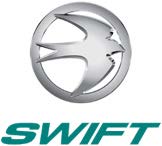
Craven Fawcett | How a 180-year-old company, manufacturing products you are likely to see every single day.
Challenges
- Large and heavy machinery not easily transported
- Enabling customers to explore the machines is difficult with brochures and only partly achieved with 3D models given their broad adoption across the competitive landscape
- It is difficult to make a first impression that leaves a memorable impact
Solutions
- Virtual reality provides the immersive experience while locating Craven Fawcett firmly in an innovation zone; perceived as such in the cutting-edge approach to addressing customer concerns by showing them where and how they have been addressed
- Craven Fawcett has risen above the level playing field
Benefits
- An almost irresistible invitation to customers to engage
- Significant logistics advantage; no hauling large machinery across the country, saving on both resources and costs
- High impact and memorable product demonstration
- Higher quality conversations achieved earlier at the planning stage





